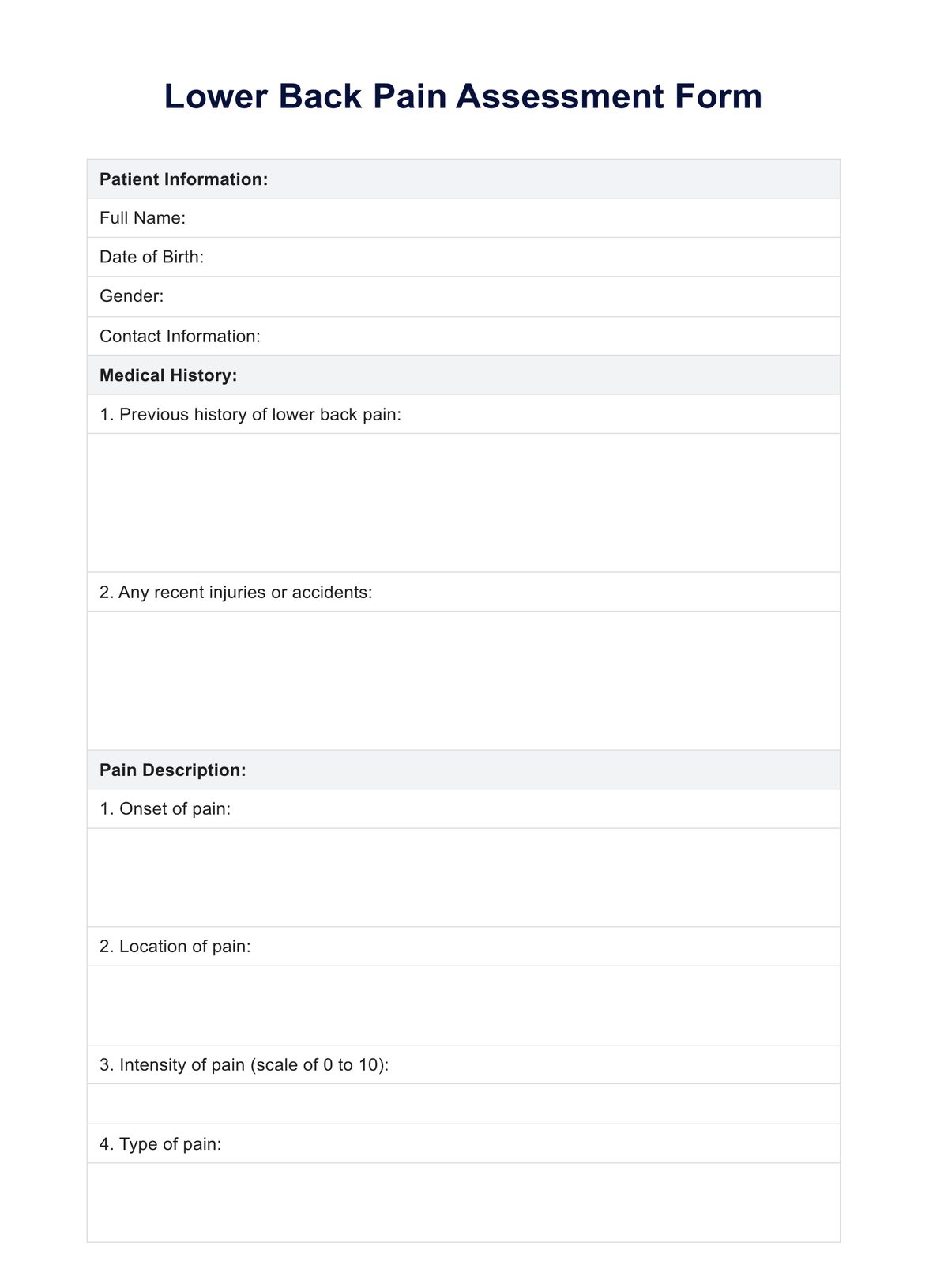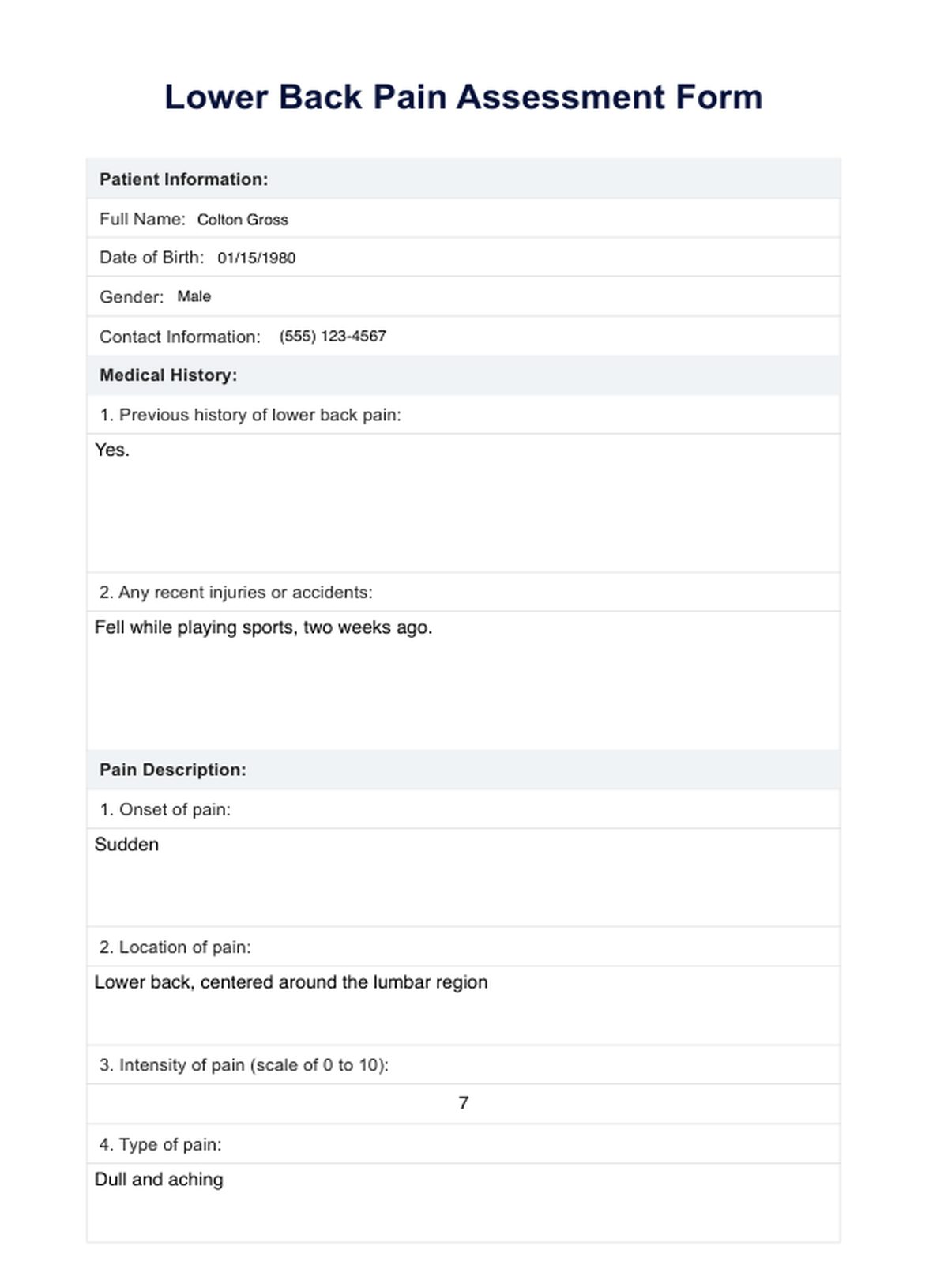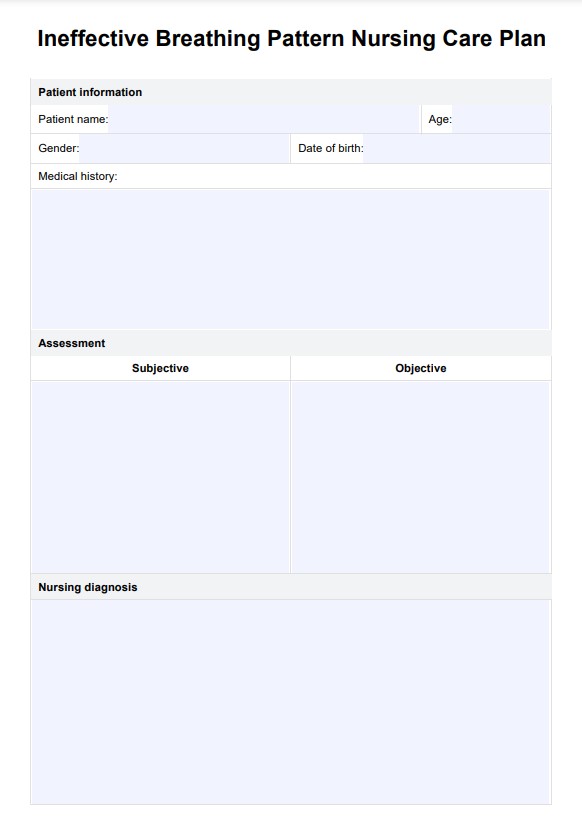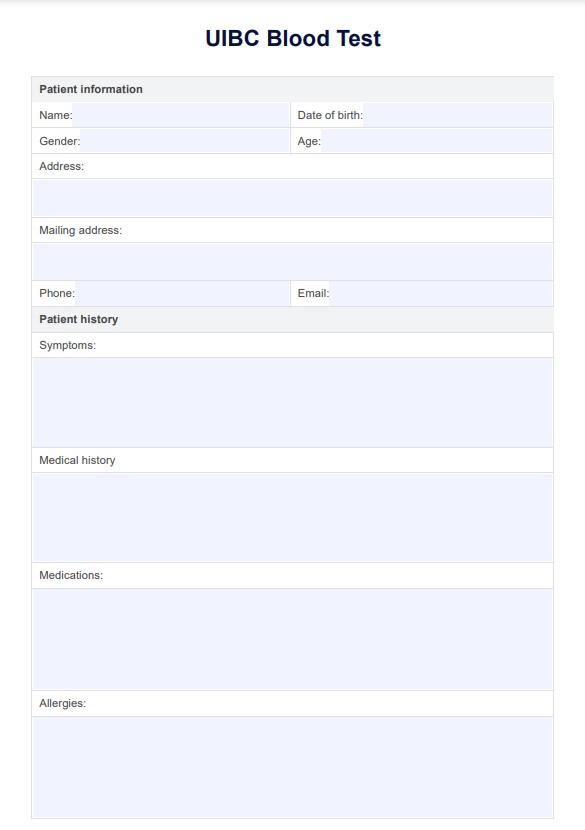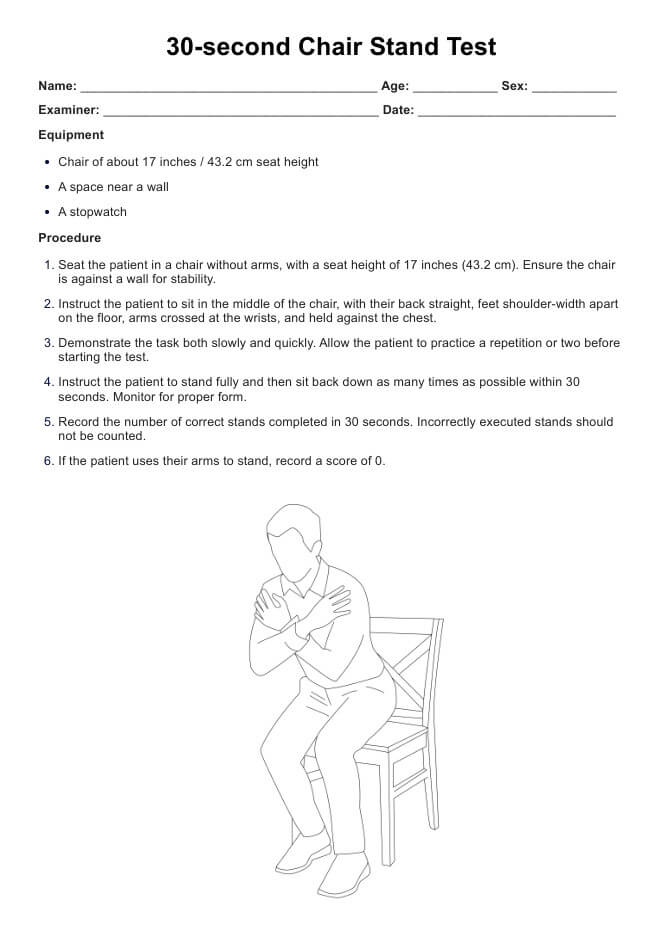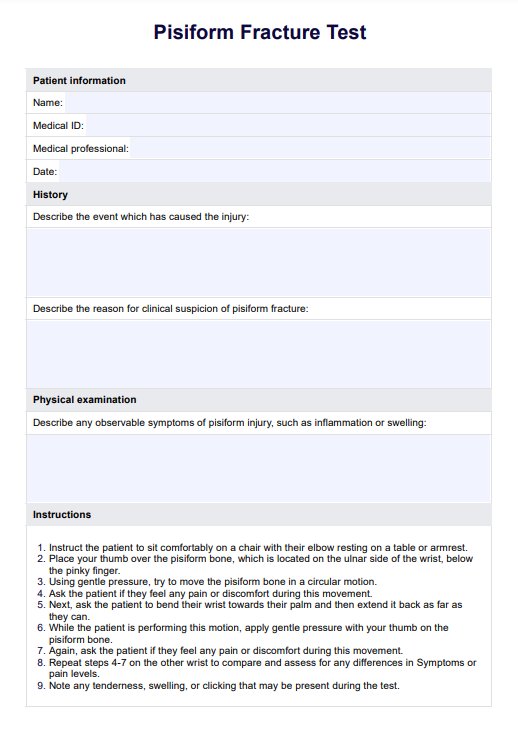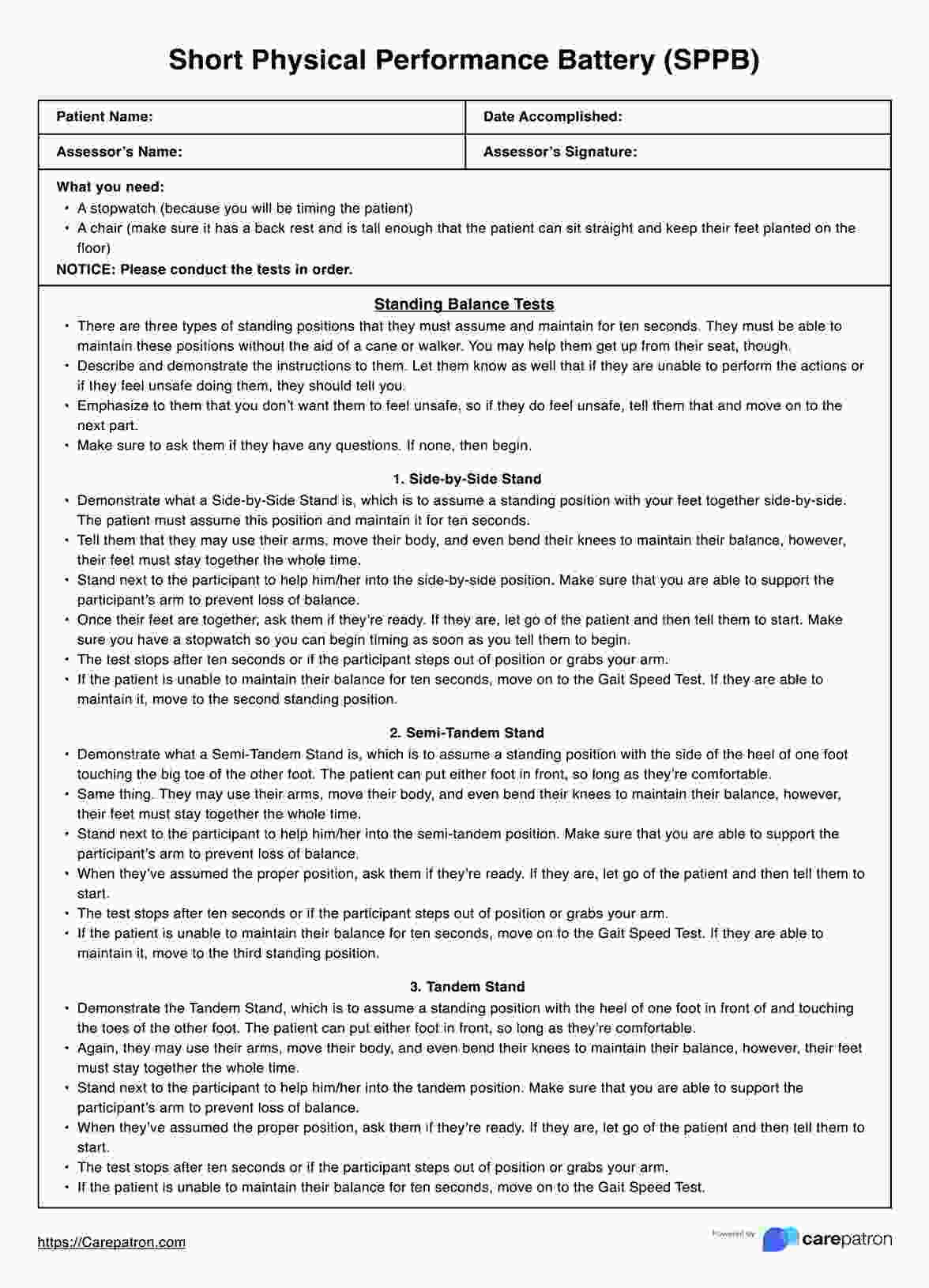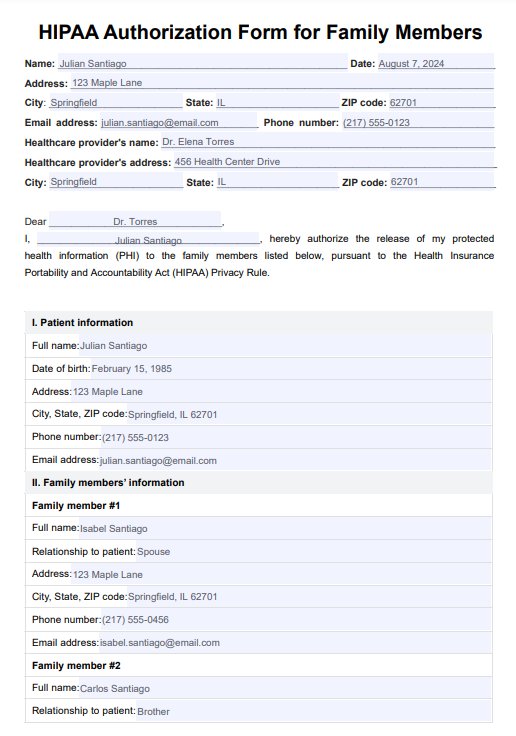Low Back Pain Exercise PDF
Download a free PDF that includes low back pain exercises with step-by-step instructions and examples. These exercises can help alleviate and prevent low back pain.


Common examples of exercises to alleviate lower back pain
Incorporating targeted exercises into your routine can make a significant difference when combating lower back pain. These exercises strengthen the core, improve flexibility, and promote overall spinal health. Let's dive into some common and practical exercises that can be included in your low back pain exercise PDF:
1. Pelvic tilts
Start by lying on your back with your knees bent and feet flat on the floor. Gently tilt your pelvis upward, flattening your lower back against the ground. Hold for a few seconds, and then release. Repeat this movement to engage your lower abdominal muscles and promote stability in the lumbar region.
2. Cat-cow stretch
Assume a tabletop position on hands and knees. Inhale as you arch your back, dropping your belly towards the floor (Cow). Exhale as you round your spine, tucking your chin to your chest (Cat). This dynamic stretch helps to mobilize the spine and relieve tension in the lower back.
3. Bird-dog exercise
Start on your hands and knees in a tabletop position. Extend your right arm forward and left leg backward, keeping your back straight. Hold for a few seconds, then return to the starting position and switch sides. This exercise enhances core stability and strengthens the muscles supporting the spine.
4. Bridge exercise
Lie on your back with knees bent and feet hip-width apart. Lift your hips towards the ceiling, creating a straight line from shoulders to knees. Squeeze your glutes at the top and hold briefly before lowering back down. The bridge exercise targets the glutes and lower back muscles.
5. Child’s pose
Begin on your hands and knees, then shift your hips back towards your heels while reaching your arms forward. This gentle stretch helps to release tension in the lower back, promoting relaxation and flexibility.
6. Knee-to-chest stretch
Lie on your back and bring one knee towards your chest, holding it with both hands. Keep the opposite leg bent or straight on the floor. This stretch helps to release tightness in the lower back and glutes.
Low Back Pain Exercise PDF Template
Low Back Pain Exercise PDF Example
Who can use this template?
This low back pain exercise PDF template is a valuable resource not only for individuals seeking relief from lower back discomfort but also for healthcare practitioners who play a pivotal role in recommending targeted exercises for their patients. Let's explore who can benefit from this template:
Physiotherapists
Physiotherapists can utilize this template as a guide when creating personalized exercise plans for individuals experiencing lower back pain. By tailoring the exercises to address specific patient needs, physiotherapists can enhance rehabilitation and promote long-term spinal health.
Chiropractors
Chiropractors specializing in musculoskeletal issues can recommend this template to complement their treatment plans. The exercises outlined here focus on strengthening core muscles and improving flexibility, aligning with chiropractic principles of spinal health.
Primary care physicians
Primary care physicians often encounter patients with complaints of lower back pain. This template is a valuable tool for doctors to recommend exercises patients can incorporate into their daily routines. A structured exercise approach can empower patients to manage their condition actively.
Physical trainers and fitness instructors:
Fitness professionals can integrate this template into their training programs for clients with a history of or predisposition to lower back pain. Including these exercises with proper guidance can contribute to overall fitness while minimizing the risk of exacerbating back issues.
Occupational therapists
Occupational therapists, addressing the impact of musculoskeletal issues on daily activities, can incorporate these exercises into rehabilitation plans. By tailoring the template to suit each patient's unique needs, occupational therapists can enhance functional outcomes.
Sports medicine specialists
Sports medicine specialists can recommend this template as part of a comprehensive approach to preventing and managing lower back pain for individuals involved in sports and physical activities. The exercises focus on strengthening and flexibility, crucial elements for athletes.
How to use this template?
Utilizing this low back pain exercise PDF template is a straightforward process that empowers individuals to take control of their spinal health. Follow the steps below to make the most of this valuable resource:
1. Introduction to the template
Begin by familiarizing yourself with the introductory section of the PDF. Gain insights into the template's purpose, understanding that it is designed to provide a structured guide for alleviating and preventing lower back pain through targeted exercises.
2. Assessment and consultation
Before diving into the exercises, assess your current health status and consult with a healthcare professional, such as a physiotherapist or primary care physician. Ensure that the exercises align with your specific needs and medical history.
3. Exercise selection
Explore the exercises outlined in the template. Each exercise is accompanied by clear instructions and illustrations to guide you through proper form and technique. Choose exercises based on your comfort level and gradually progress as your strength and flexibility improve.
4. Customization for personal needs
Tailor the template to your unique requirements. If you have specific limitations or preferences, work with your healthcare provider to modify the exercises accordingly. The goal is to create a personalized plan that addresses your concerns and goals.
5. Consistency and progress tracking
Establish a regular exercise routine incorporating the selected exercises. Consistency is key to experiencing the benefits of these exercises. Use the provided tracking sections within the PDF to monitor your progress over time, making adjustments as needed.
6. Review and update
Periodically review your exercise routine and consult with your healthcare provider for any necessary updates. Adjustments to the intensity or variety of exercises may be recommended as your strength and flexibility improve.
7. Seek professional guidance
If you encounter any challenges or have concerns about your progress, don't hesitate to seek guidance from a healthcare professional. They can provide valuable insights, address any issues, and ensure your exercise routine remains safe and effective.
Causes of lower back pain
Lower back pain is a common ailment attributed to various factors. Understanding the root causes is crucial for effective prevention and management. Let's delve into some key contributors to lower back pain:
Muscle strain and sprains
Overexertion, lifting heavy objects, or sudden movements can lead to muscle strains or sprains in the lower back. This often results in pain and discomfort, especially during movement.
Poor posture
Maintaining improper posture, whether sitting or standing, can put a strain on the lower back over time. Slouching or hunching can lead to muscle imbalances and increased pressure on the spine.
Herniated discs
The intervertebral discs, acting as cushions between spinal vertebrae, may rupture or bulge, causing pressure on nearby nerves. This can result in lower back pain, often accompanied by leg pain or numbness.
Degenerative disc disease
As discs naturally age, they may lose their flexibility and shock-absorbing capabilities. This degeneration can lead to chronic lower back pain, particularly in older individuals.
Sciatica
Compression or irritation of the sciatic nerve, which extends from the lower back down the back of each leg, can cause sharp, shooting pain in the lower back and legs.
Osteoarthritis
The breakdown of cartilage in the joints can result in osteoarthritis, leading to pain and stiffness in the lower back. This condition becomes more prevalent with age.
Spinal stenosis
Narrowing of the spinal canal can put pressure on the spinal cord and nerves, causing lower back pain. This condition is often associated with aging.
Scoliosis
An abnormal curvature of the spine, known as scoliosis, can contribute to lower back pain. This condition may develop during childhood or adolescence.
Lifestyle factors
Sedentary lifestyles, obesity, and lack of regular exercise can weaken the muscles supporting the lower back, increasing the risk of pain and discomfort.
Psychological factors
Stress, anxiety, and depression can manifest physically, contributing to lower back pain. Emotional well-being plays a significant role in overall musculoskeletal health.
Commonly asked questions
Maintain good posture, exercise regularly on core strength, and practice proper lifting techniques to prevent strain on the lower back.
Common triggers for lower back pain include poor posture, sedentary lifestyle, heavy lifting without proper technique, and underlying conditions such as herniated discs or muscle strains.
Factors that can worsen lower back pain are sedentary behavior, prolonged sitting, lifting heavy objects improperly, and repetitive motions without proper conditioning. Additionally, stress and lack of proper sleep can contribute to heightened discomfort.


